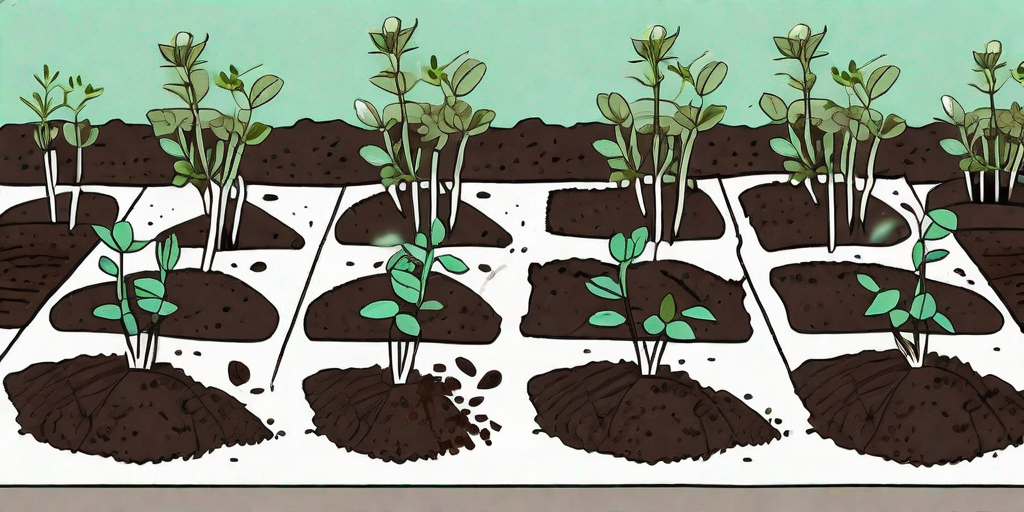
Welcome, green-thumbed enthusiasts and budding gardeners! If you're looking to spice up your garden or kitchen windowsill with a touch of thyme, you've come to the right place. This aromatic herb is not only a culinary delight but also a joy to grow. So, let's not waste any more thyme (pun intended) and dig right into the world of planting thyme seeds.
Why Thyme?
Before we get our hands dirty, let's take a moment to appreciate the humble thyme plant. Thyme is a versatile herb that's used in a variety of cuisines around the world. Its subtle, earthy flavor complements many dishes, from hearty roasts to delicate fish plates.
But thyme isn't just a kitchen superstar. It's also a garden gem. Thyme plants are hardy, drought-resistant, and can thrive in a variety of climates. Plus, their tiny, fragrant flowers are a magnet for bees and butterflies, adding a buzz of life to your garden.
Choosing Your Thyme Seeds
Thyme comes in many varieties, each with its unique flavor profile and growth habit. Some popular varieties include English thyme, lemon thyme, and creeping thyme.
English thyme is the classic variety most commonly used in cooking. Lemon thyme, as the name suggests, has a zesty citrus flavor. Creeping thyme is a ground cover variety that's perfect for rock gardens or as a lawn substitute.
When choosing your thyme seeds, consider your culinary preferences and your garden's conditions. Some varieties prefer full sun, while others can tolerate partial shade. Also, keep in mind the mature size of the plant to ensure it fits comfortably in your garden or pot.
Planting Your Thyme Seeds
Step 1: Preparing the Soil
Thyme prefers well-drained soil with a pH between 6.0 and 8.0. If you're planting in a pot, choose a potting mix designed for herbs or succulents. If you're planting in the garden, amend the soil with compost or well-rotted manure to improve drainage.
Thyme plants are not heavy feeders, so there's no need to add a lot of fertilizer. A sprinkle of slow-release granular fertilizer or a thin layer of compost should be enough to feed your thyme plants for the entire growing season.
Step 2: Sowing the Seeds
Thyme seeds are tiny, so they don't need to be buried deep in the soil. Simply scatter the seeds on the soil surface and lightly press them in. If you're sowing in a pot, aim for a few seeds per pot. If you're sowing in the garden, space the seeds about 8 to 12 inches apart.
After sowing, water the seeds gently. The soil should be moist, but not waterlogged. Cover the pot or garden bed with a plastic bag or a cloche to create a mini greenhouse. This will help keep the soil moist and warm, which will encourage the seeds to germinate.
Step 3: Caring for Your Thyme Plants
Thyme seeds usually germinate within 1 to 2 weeks. Once the seedlings are large enough to handle, thin them out to their final spacing. Keep the soil evenly moist, but be careful not to overwater. Thyme plants are susceptible to root rot if they sit in waterlogged soil.
As your thyme plants grow, pinch out the tips to encourage bushy growth. Once the plants are established, they require little care apart from occasional watering and harvesting.
Harvesting and Using Your Thyme
Thyme can be harvested at any time, but the flavors are most intense just before the flowers open. To harvest, simply snip off the stems with a pair of scissors. Thyme leaves can be used fresh or dried for later use.
Thyme is a versatile herb that can be used in a variety of dishes. It pairs well with meats, vegetables, and even fruits. Try adding a sprig of thyme to your roast chicken or your apple pie for a touch of earthy sweetness.
Frequently Asked Questions
- Can I grow thyme indoors?
Yes, thyme is a great herb to grow indoors. It prefers a sunny spot, so place your pot near a south-facing window if possible. - How long does it take for thyme to grow from seed?
Thyme seeds usually germinate within 1 to 2 weeks. The plants will reach maturity in about 2 to 3 months. - Does thyme come back every year?
Yes, most varieties of thyme are perennial, meaning they come back year after year. However, they may need some protection in colder climates.
So there you have it, folks! With a bit of patience and care, you can grow your own thyme from seed. It's a rewarding process that not only enhances your culinary creations but also adds a touch of green to your home or garden. So why wait? It's thyme to get your hands dirty!











